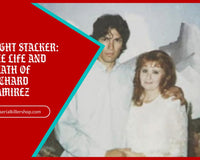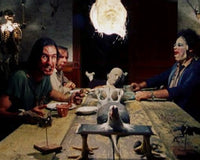
Watch The Exorcist by yourself and you'll likely end up turning on every light in the house, expecting to find demons lurking in the shadows. Once you learn about The Exorcist true story, you may have even more trouble sleeping. The Roland Doe exorcism was a real-life event that inspired William Peter Blatty to write The Exorcist. Psychologists even coined the term “cinematic neurosis” after the release of the movie, for people plagued by the terrifying thought that they might become the subject of a demonic possession themselves. If you're losing sleep due to cinematic neurosis, you might want to spend those sleepless nights checking out the Serial Killer Shop horror collection to kill some time.
Opening the Portal
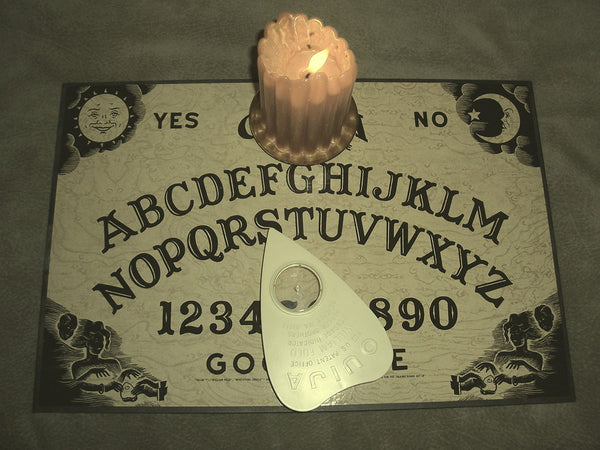
The true story of the Roland Doe exorcism goes back to the late 1940s in Cottage City, Maryland, a small, quaint community on the Anacostia River not far from Washington, D.C. The boy in our story goes by the name of Roland, which was a pseudonym used in documentation to protect the boy's identity. The boy lived in a home with adults, he had no siblings and there were no other children in the house to play with when he was young.
Many of the other children who went to school with him described him as quiet, withdrawn, and unpopular. He wasn't very athletic, but he was a good student who loved to learn. One of his favorite people to spend time with was his Aunt Harriet, who was also a spiritualist.
In the big book of things you should never do in a horror movie, his Aunt Harriet introduced Roland to a Ouija board when the boy showed interest in the game. Could this introduction to Ouija have possibly opened the gate to another world and allowed a demon to enter his body?
The Death of an Aunt
Things were relatively normal for Roland until the death of his Aunt Harriet in 1949. After she died, the family began to note strange occurrences in the house. Furniture started to move on its own, objects would levitate or fly across the room, and strange noises kept the family on edge.
As the disturbances continued, they also got worse. It started with some scratching on the walls that sounded like water. Then the noises turned into thumping and footsteps. At one point, a portrait of Jesus Christ hanging on the wall began moving and banging against the wall. The occurrences only happened when Roland, who was 14 years old at the time, was nearby.
The family turned to their pastor for help and guidance. The pastor was a Lutheran by the name of Luther Miles Schulze, who just happened to have an interest in parapsychology. Schulze corroborated the claims of unusual activity that the family was experiencing, and he told the parents they should consult with a Catholic priest who was familiar with exorcism.
The First Exorcism Attempt

The boy was "treated" by more than one priest and in differing locations. One of the most famous instances was the attempted exorcism by Edward Hughes, who conducted the exorcism at Georgetown University Hospital. The exorcism was never completed. The boy was able to escape the restraints during the exorcism and lash out at the priest's arm with a bedspring from the mattress.
The exorcism was halted and the family made contact with a Catholic priest who was also a professor at St. Louis University, Raymond J. Bishop. Being the academic he was, Bishop kept a daily log of the events that transpired while working with Roland.
Getting Approval for a Second Exorcism
Raymond J. Bishop, the real exorcist, sought the assistance of a priest by the name of William S. Bowdern, who was an associate of College Church. With the goal of gathering evidence for the archbishop, they traveled to Roland’s home where they observed a shaking bed, strange guttural voices coming from the boy, flying objects, and his extreme aversion to anything religious or sacred in nature. After reporting the findings, the exorcism was allowed to continue with the support of the church authorities.
The duo conducted the exorcism at The Alexian Brothers Hospital in St. Louis, Missouri. The hospital was later torn down and destroyed in 1978, so it's no longer around for those who want a glimpse of the original exorcism location. A total of 48 people were reported to witness the exorcism.
Preparing for the Second Exorcism

After learning how the first exorcism unfolded, the priests decided to make detailed preparations for the next exorcism. A priest by the name of Walter Halloran was called to assist Bowdern in the psychiatric wing of the hospital. Another priest by the name of William Van Roo was available to assist in the exorcism as well. The boy was strapped to a bed to prevent injury to himself and others, but the preparations weren't enough to keep the boy calm during the ritual. As you'll soon find out, there was no small amount of violence that erupted from within this boy's little body.
The Second Exorcism
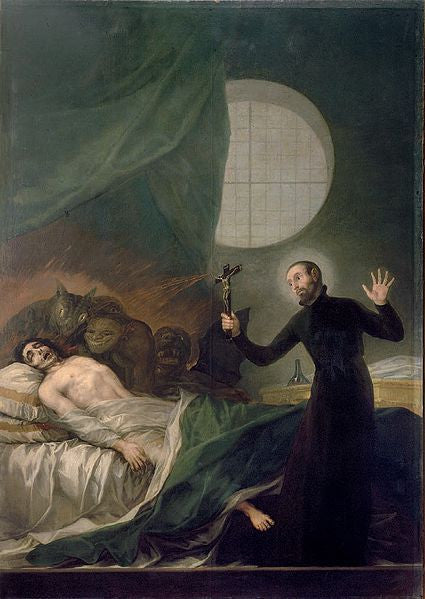
The second and final exorcism took place on Easter Monday in 1949. Having completed their preparations, the priests began the process of exorcising the demon from the boy in a secluded room in the hospital. During the exorcism, Halloran noted that words and marks began to appear on the boy's body. At one point, he saw the word "evil" materialize. The word "hell" is also said to have appeared on the boy. The portion of the exorcism where the saints are called upon resulted in a violent shaking of Roland’s mattress.
The Litany of Saints portion of the rite was one of the most harrowing for the priests, but they continued on with the exorcism. While no priest had an arm sliced this time, Halloran's nose was broken by the boy. The exorcism took a total of eight minutes, and when it was over the boy said in a tone that signified relief, "He's gone!" Other reports indicate that the boy said, "It's over. It's over." The room where the exorcism took place was sealed off to prevent further access.
The Diary of Bishop
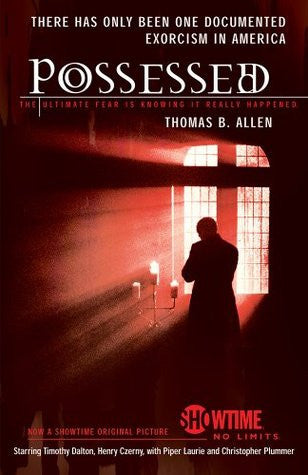
Bishop's diary was reportedly left at the hospital. The diary was found in 1978, just before the building was destroyed. The diary became the starting point for a book titled Possessed: The True Story of an Exorcism by Thomas B. Allen. The book contains the contents of the diary, and it provides the most complete account of an exorcism in modern times.
The book was not without controversy, and Exorcist author William Peter Blatty wanted to recount the details of the exorcism in a new book. Blatty contacted Bowdern for assistance, but Bowdern declined, stating that he didn't want to help because he feared that the exorcism "would be most embarrassing, and possibly painfully disturbing to the young man." He noted that he conducted the exorcism at the direction of Archbishop Joseph E. Ritter, who later became a cardinal, and he wanted to keep the case discreet.
Still, the discovery of the diary offered more insight into the plight of Roland and the priests as they attempted to exorcise the demon within. The details in the diary are meticulous and comprehensive, and it will serve as a good starting point for anyone who wants to learn about what happened during the exorcism of a boy in 1949.
Life After an Exorcism
After the exorcism, the boy reportedly went on to live a normal life. Writer Thomas B. Allen attempted to protect the boy's true identity by giving him the aliases Robbie Mannheim or Roland Doe. The Mannheim family didn't experience any additional problems, and they returned home to resume their lives.
The boy grew up to live a happy life and he later became very successful, getting married and having children. Fifty years after the exorcism took place, Robbie Mannheim reported that he could not remember the possession and has no idea what it was like to be possessed. The experience would most likely scar anybody for life, but it seems that along with the exorcism of the demon, traumatic memories were wiped away as well.
Taking Home an Oscar

The Exorcist tells a tale so compelling and disturbing that it gets to the very roots of our deepest fears. It's a story about losing control of ourselves, which is something most of us dread. The film was one of the very few horror movies to have won an Oscar, and it took away the awards for Best Writing and Sound. The Exorcist is a haunting movie that plays on our greatest fears. Whether or not you believe in spirits, ghosts, or demons, it's a film that gets under your skin and stays with you forever.





